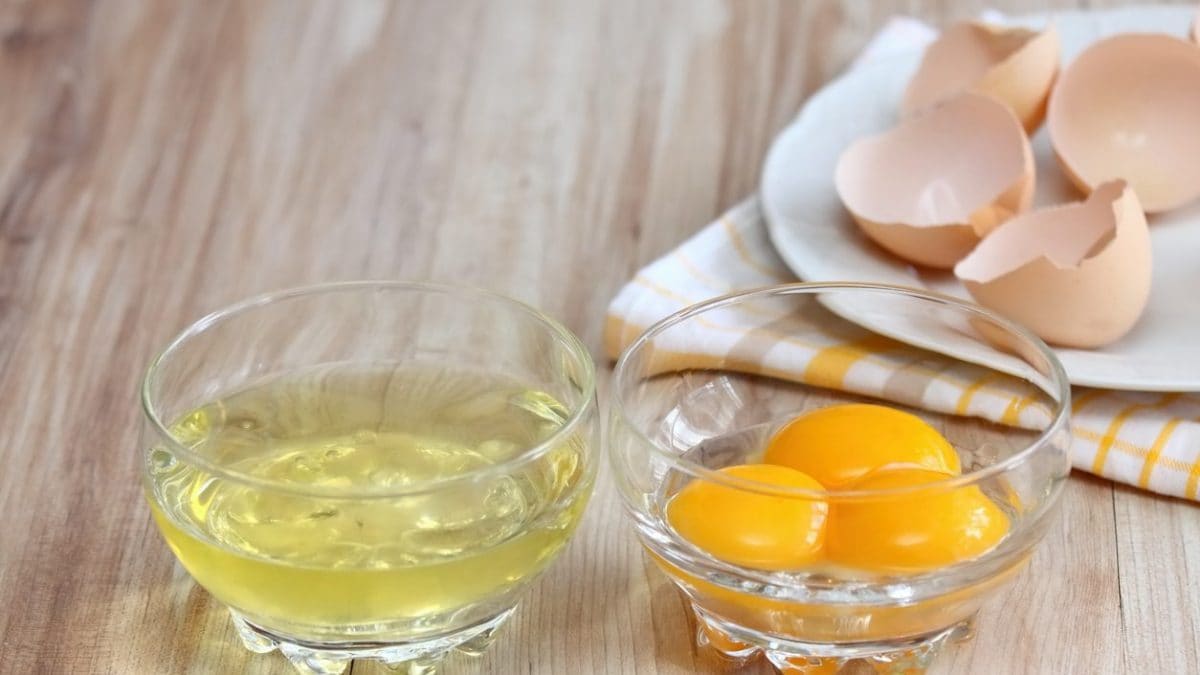
Egg whites, the white part of eggs, are a popular food for their nutritional value, especially among those who play a lot of sports and those who follow a protein-rich diet. Unlike egg yolks, egg whites are virtually free of fat and cholesterol and are composed primarily of water and protein, as well as minerals (magnesium, sodium, and potassium), B vitamins, and carbohydrates (especially glucose). There's a problem, however: when you cook eggs, much of the protein in the egg white evaporates, which is why people tend to eat them raw. But is it safe to do so? No, it's best avoided, just like with egg yolks: we'll explain why and how to safely consume undercooked egg whites.
Can You Eat Raw Egg Whites?
Let's clear up any doubts right away: no, egg whites cannot be eaten raw, just like egg yolks cannot be eaten raw. There are three main reasons.
- First of all, the most important concerns a real infectious health risk: eating any part of a raw egg exposes you to the risk of contracting food poisoning caused by a whole host of bacteria. Raw eggs in particular can be contaminated by salmonella, a very dangerous bacterium that is usually found on the shell but, if the shell is cracked, even with tiny holes, or is subject to sudden changes in temperature, can easily penetrate inside.
- The second problem related to the consumption of raw egg whites is the possibility of developing a vitamin deficiency: when raw, egg whites have a high concentration of avidin (which, however, is neutralized by cooking), a protein that prevents the absorption of biotin, a water-soluble vitamin of the B group essential for metabolism and for the production of keratin, an essential component of skin appendages such as nails and hair.
- Finally, raw egg white is very difficult to digest: cooking, by coagulating the proteins, facilitates the action of digestive enzymes and allows them to be absorbed more easily, whereas raw egg whites reach the body in their pure form and are much more difficult to process.

The Safe Way to Eat Egg Whites (Almost) Raw
So how can we preserve all the best qualities of the egg white and prevent them from being lost during cooking? The best solution is to pasteurize the egg, just as you would with the yolk to use "raw" in recipes like tiramisu or carbonara. Pasteurizing the egg means subjecting it to rapid blanching at high temperatures for the time necessary to neutralize the bacteria, but stopping the process before the food begins to cook.
Generally, eggs (whole, whites only, or yolks only) can be pasteurized in a bain-marie: simply place the product in a bowl over a saucepan of hot water and stir until it reaches 140°F/60°C (the egg white coagulates from 143°F/62°C to solidify at 149°F/65°C, while the yolk ranges from 149°F/65°C to 158°F/70°C). Keep it at this temperature for 3 minutes, then proceed to use the product as desired. Thanks to pasteurization, you will obtain a mixture with a fluid and homogeneous consistency, eliminating all the risks we have exposed related to raw consumption.

This procedure should always be applied to any egg, whether purchased from a farmer or at the grocery store. It doesn't matter whether they're from intensive, free-range, or free-range farms, because bacterial contamination occurs if the eggs are pierced, and it can happen in any case. Also remember to be wary of pre-pasteurized yolks and whites offered by the food industry: industrial pasteurization doesn't always guarantee zero risk, especially if the packaging states "consume after cooking." It's always best to re-pasteurize the product at home for greater safety.
;Resize,width=767;)
